

|
|
Equally renowned for producing deep roots reggae, trance-inducing dub and bittersweet lover’s rock, the Mad Professor’s Ariwa Sounds stable is a veritable institution of British reggae. Prof was ridiculed when he first set up a studio in the front room of his south London home in the late 1970s, but plenty of hits soon followed thanks to his creative drive, perceptive production skills and technical expertise behind the mixing desk; in the best reggae tradition, Ariwa drew from diverse influences to create a unique sound, making use of unbridled artistic ambition to fill any gaps that may have appeared due to a lack of finance. Since those humble beginnings, Mad Professor’s music has seen him circumnavigate the globe countless times and his skills as a dub remixer have drawn requests for collaboration from numerous stars working in different popular genres all over the world, all of which is testament to the pervasive and broadly appealing nature of his creations. The soon to be released deluxe 2-CD set "Method To The Madness – The Best Of Mad Professor" on Trojan Records celebrates over 25 years of Ariwa ingenuity and those who have had the pleasure of spending time in Professor’s company know that he is a man of high intelligence and easy wit, committed to progressive social change as well as evolutionary music; he is also a gentleman in every sense of the word. |
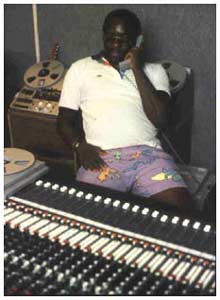 Mad Professor 1989. |
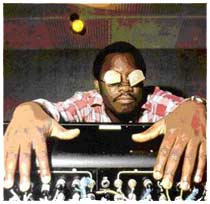 Mad.. Mad.. Mad Professor. |
Although
very much a southeast London phenomenon, the story of Ariwa really
begins several thousand miles further southwest in Georgetown, Guyana,
where Neil Fraser was born in 1955. The only British colony established
on the South American mainland, Guyana is a mixture of impenetrable
jungle and Caribbean coastline, populated by African slave descendents,
the offspring of east Indian indentured labourers and Amerindian tribes
people; just as the most prominent of Jamaica’s pre-European
inhabitants, the Taino, referred to the island as Yamaye, meaning ‘land
of springs’ or Xaymaca, meaning ‘land of wood and water,’ so did the
Amerindian inhabitants of Guyana call their region Guiana, meaning
‘land of waters’ and it is thought that the Taino and Carib that
migrated northward to the Caribbean islands from their original home in
the Orinoco delta did so from the Guyanese coast. As Guyana prepared
for its independence from Britain in the mid-1960s, there were other
important links with Jamaica that young Neil was exposed to via the
radio; as he recalls, "In the Eastern Caribbean, you couldn’t pick
up any Jamaican stations but you had a very good station called BVI,
Virgin Islands radio, with a very good deejay, one of the best I’ve
ever heard, called the Groove Governor: he would be playing the best
reggae for four hours on a Saturday night, so you would hear Dennis
Alcapone and Lizzy, a lot of Bunny Lee productions and Studio One, so I
used to tune in every Saturday night. Also, certain producers really
leant heavily on the Caribbean market: Bunny Lee was one of them and
Byron Lee with Dynamics, so you’d get the Bunny Lee, Dynamics and
Federal records and certain people were bigger in the Eastern Caribbean
than in Jamaica, like Ken Lazarus and Dobby Dobson, they were huge
artists. But I was definitely inspired by Prince Buster and Ken Boothe,
and for some reason, the Gaylets with Marcia Griffiths were popular,
and Rita Marley and Tinga Stewart were popular."
|
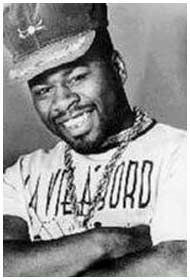 John McLean. |
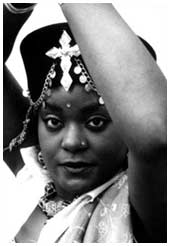 Shaloma. |
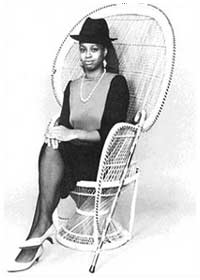 Aisha. |
Seeking
better employment opportunities, Neil’s parents migrated to Britain and
he joined them at the age of thirteen, settling in the south London
suburb of Tooting. Although his parents split up and his mother
remained in Guyana, Neil found that his father, employed as a lab
technician at Charing Cross Hospital, stimulated his interest in
electronics, while music remained a primary motivation for the youth. "I used to be a technician," Neil explains, "even
when I was back home I used to build radios and stuff like that, so
when I came to London I continued, because I found my father was also
in electronics; he had loads of parts around, so I then built different
things. When I left home in the early ‘70s, I thought I’d built some
effects: I built a reverb unit and I just got drawn into the thing, had
a tape machine and I started to like put my voice on records and I
ended up building a mixer, so then I thought I’d build a studio. But
before then, I was just a big reggae fan: the first records I bought
were things like “You Never Get Away” by the Melodians—I really loved
Treasure Isle and the Bob Marley sessions produced by Lee Perry, like
“Duppy Conqueror,” “Screwface,” “Small Axe,” “Upsetting Station,” those
were my favourite tunes. I got sucked into the whole thing, the U Roy
scenario, not ever thinking I would end up doing it professionally but
it was something I really loved and I really understood; after I became
a technician, I analysed the records, like King Tubby’s records,
analysed them and found out what they’re doing and tried to emulate
them. I was an electronic technician, started to work for places like
Reddifon Rediffusion; I was gifted in that, so I didn’t have to study
it, I just read books, maybe not learning it the proper way but I learn
it my way, just learned electronics and sound engineering. Soundcraft
had this job going and I went and the guy showed me a big pile of
boards that was thrown in a corner; he said, “These boards got faults”
and nobody could fix them—he said, “I’ll give you two days trying, if
you could fix them then you’ve got a job” and I managed to fix all the
boards, so I stayed there for two years until I started professionally
with the studio."
|
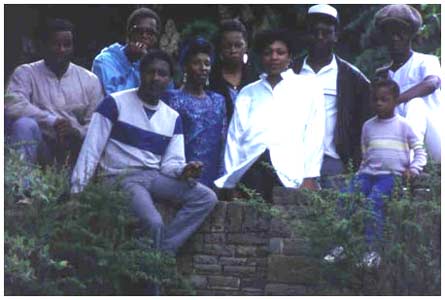 Ariwa Posse 1984. |
The
material to emanate from Gautrey Road is really the sound of Ariwa
finding its feet: Johnny Clarke’s aptly-titled ‘Yard Style’ album
retained a Jamaican sensibility whilst also incorporating a range of
international influences; Pato Banton’s debut album showed the
Birmingham-based toaster was equally capable of humorous ditties and
politically relevant material; Sandra Cross’ recasting of the
Stylistics’ ‘Country Living,’ first adapted in reggae by the Mighty
Diamonds, was a particularly strong example of the UK lover’s rock
genre, grafting soulful vocals onto lilting reggae beats. Professor
also notes that he also made an important connection during this era,
cutting his first set of recordings with Lee ‘Scratch’ Perry at the
same address.
|
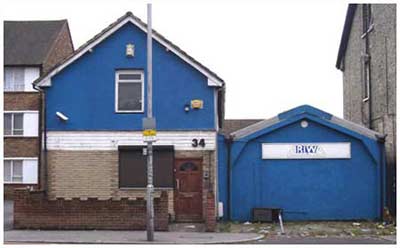 Ariwa's HQ. |
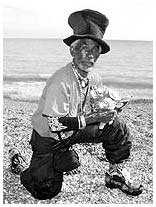 Lee "Scratch" Perry. |
Big
hits to surface from the new studio included John McLean’s romantically
vulnerable ‘If I Gave My Heart To You’ and Carol ‘Kofi’ Simms’ pairing
with toaster Macka B for a recut of ‘I’m In Love With A Dreadlocks,’
which she first recorded in 1977 as part of the harmony group Brown
Sugar; then Professor moved away from lover’s rock, seeking a change of
direction. "I did a whole bunch of nursemaiding and ended up with
quite a few hits; we definitely sold hundreds of thousands of records
out of that trend, but then people started to use me as a sandwich and
I thought, I want to move from the lover’s back into the dub and more
adventurous, experimental music, because there’s always these two sides
to my whole persona."
|
|
Text: David Katz. Photos courtesy of Mad Professor David Katz is author of People Funny Boy: The Genius of Lee Scratch Perry and Solid Foundation: An Oral History of Reggae. |